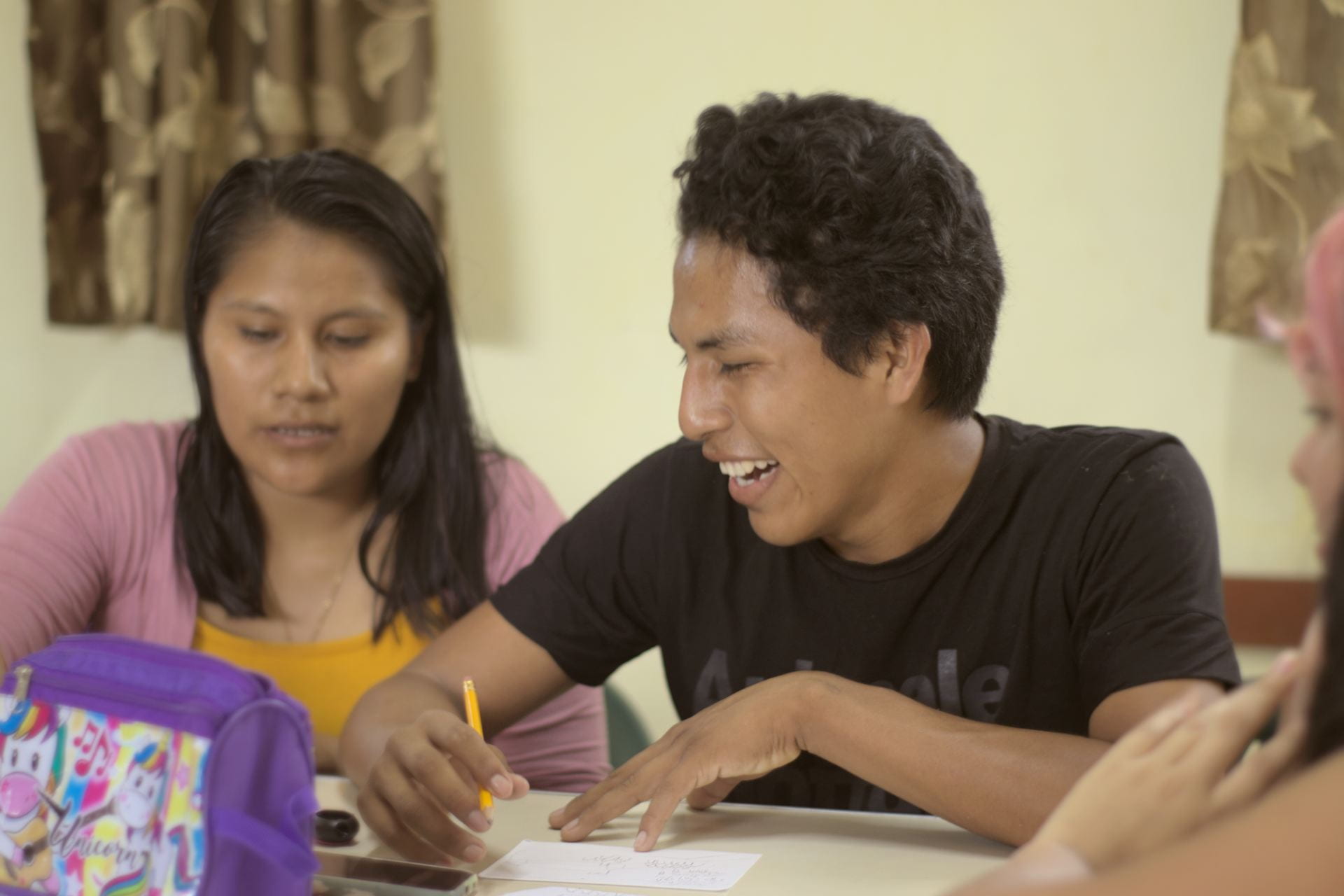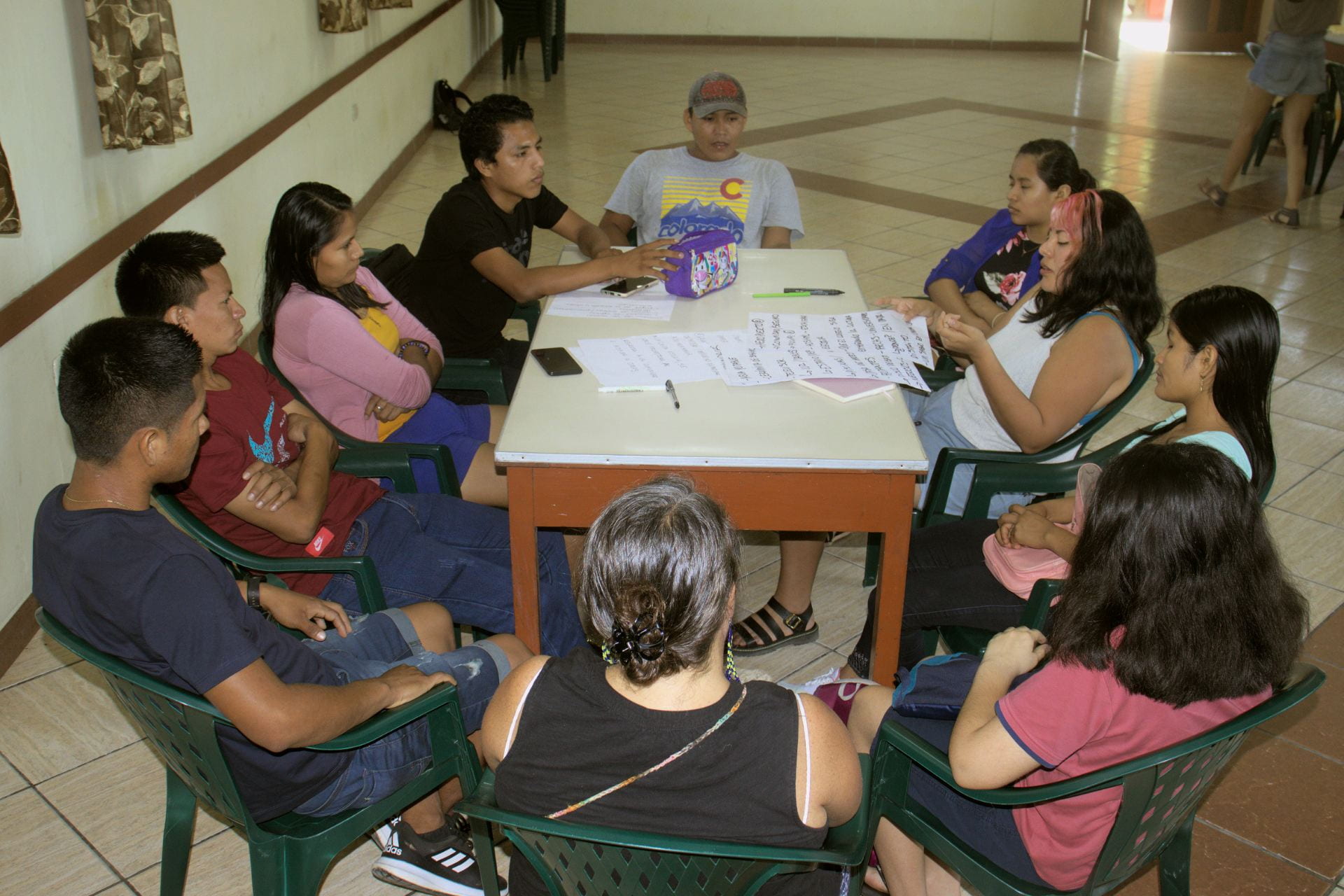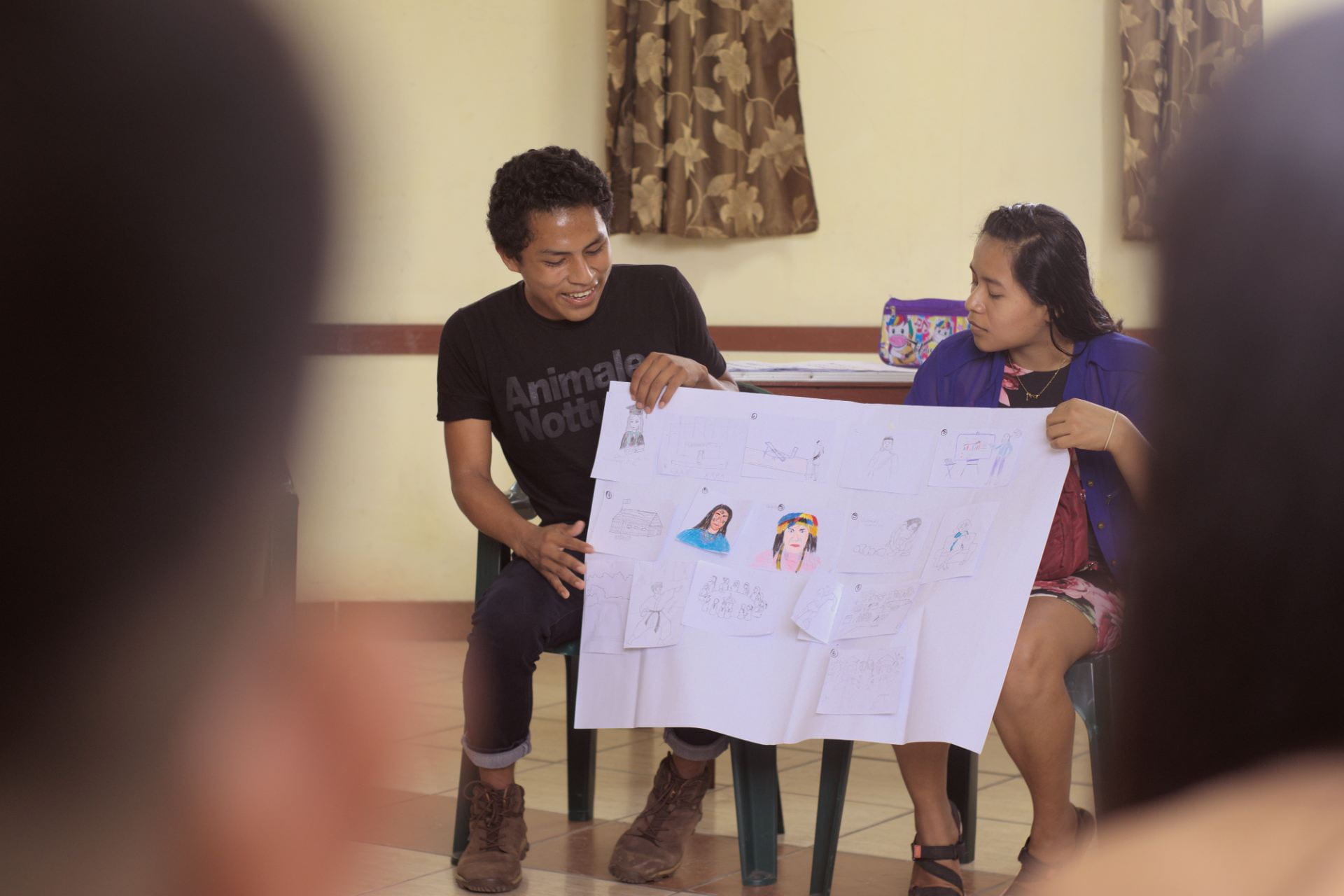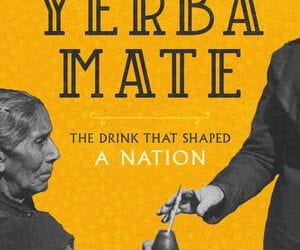Indigenous youth in Higher Education in Latin America:
A Quest for Equity and Interculturality
Percy was one the best students in his secondary school at a Yagua Indigenous community in Peru. He told me that with pride. Nevertheless, the first year of university was a real shock for him. All his confidence vanished as he experienced academic difficulties and began to doubt about his own capabilities. Percy (I’ve used pseudonyms in this article for Indigenous students because of research protocols) was not the only one to experience such a feeling. Many of the young people I worked went through the same. Clayser, a Shipibo student, told me that even the preparatory course the scholarship schemes used to offer in the first years (now discontinued), before they started to attend classes, was too complex for them to understand: it was for university students, he told me, “and we needed high school level courses back then.”
Having worked many years in rural and indigenous schools in the Andes and the Amazon, I understand what they mean: their previous schooling did not prepare them for the demands of university. Schools in rural areas have been for a long time abandoned, they suffer from insufficient educational materials, unprepared teachers, inadequate pedagogical practices and poor infrastructure. A persistent gap in learning outputs exists— as we can see in different evaluations—, making Peru’s gap the biggest one in Latin America. Improving the school experience of indigenous children and adolescents is therefore an urgent need to increase their access (and retention) in higher education.
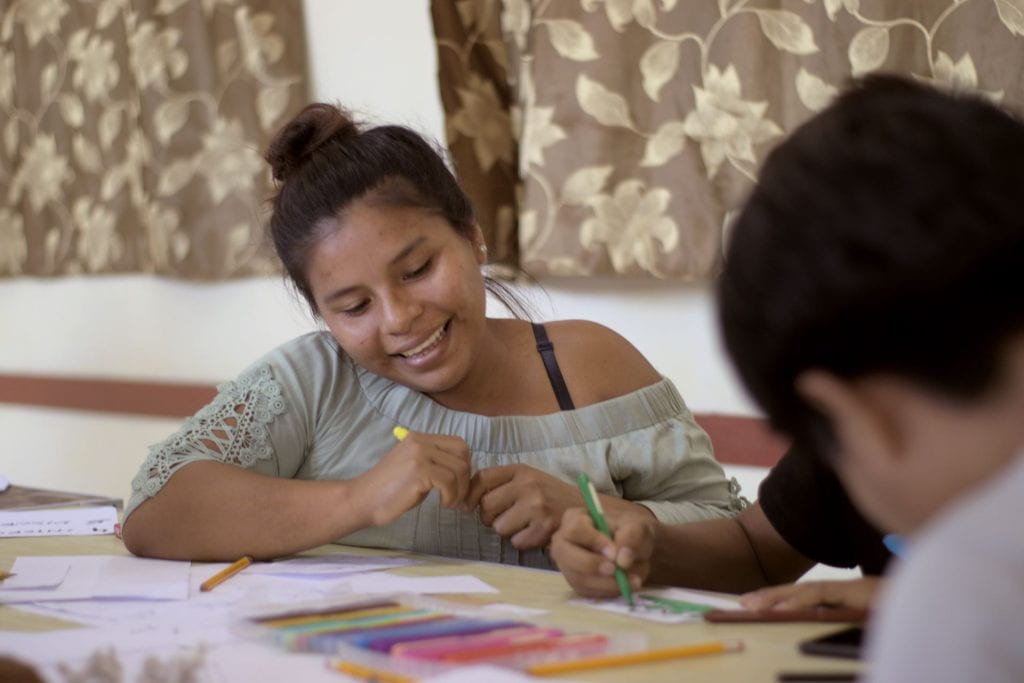
Improving the school experience of indigenous children and adolescents is therefore an urgent need to increase their access (and retention) in higher education.
Unlike Clayser and Percy, Indigenous youth in Latin America have been excluded from higher education for a long time. According to UNESCO, in 2019, Indigenous people enrollment in higher education was 32 points lower than non-indigenous people in Latin America.
Despite this gap, young Indigenous people are increasingly accessing educational services in Latin America. For instance, in Peru, the same UNESCO report indicates that the gap for concluding high school is almost closing for Indigenous and non- Indigenous students between 2010 to 2020, and thus demands for access to higher education are growing among the former.
Though many recent studies discuss the educational situation and views of Latin American indigenous peoples and their relations to the national state, less attention is paid to the changing expectations among the youngest members of these communities and their quest for education. Considering their voices in a serious manner is crucial in order to guarantee the fulfilment of their rights—including their right to education.
***
One of the main reasons for educational exclusion, although not the only one, is the costs involved in getting an education. In Peru there are two types of higher education: university and non-university tertiary education. A university degree takes about five years of studies, while a non-university degree in a technical college takes about three years. Many young people from lower socioeconomic backgrounds prefer shorter careers in order to start working earlier. However, university degrees are highly valued and many young people intents to attend university. There are public, free universities as well as private ones. The costs of the later are higher due to the tuition involved, but even in public universities, a young person has to cover for food, lodging, transport, books and day-to-day expenses. Most young Indigenous people I have talked to over the past years come from indigenous communities in the rural areas, far away from universities where they wish to study. They also come from families below the poverty line, since poverty is more prevalent among indigenous populations—due to the loss of their ancestral territories and the lack of basic services in their communities. Families thus are unable to pay for their studies.
As new scholarship schemes emerged to facilitate indigenous youth entrance into higher education, I was interested in seeing how they work and how young Indigenous people faced the entrance to higher education. The last decade we have seen such programs emerge in different Latin American countries such as Mexico, Argentina, Brazil and Chile, among others. Peru started its own program offering scholarships for higher education aimed at Indigenous youth in 2014, called Beca 18 Native Communities of the Amazon and Beca 18 Intercultural Bilingual Education. Most of the Beca 18 scholarships were used in private universities, and thus in 2016 a new scholarship program was created for students in public universities, called Beca Permanencia. Although not directed specifically towards Indigenous peoples, they also benefited from it. These scholarship programs provided a monthly allowance to live in the city and covered tuition in private universities. Although this proved to be of great help, it did not remove all the obstacles for access higher education and remain at the university, as we shall see.
The first year at university was a key one for many indigenous students. Staff were well aware of the difficulties, but reacted differently, even within the same university. In one school, a manager told me “indigenous students have the biggest dropout rate on the first year, almost half of them don’t pass the courses,” implying they would eventually lose their scholarship. At another faculty, in the same university, the staff worked very hard and in a personal basis to support their cohort of Indigenous students, managing to keep nine out of ten Indigenous students. At another university, students did not get support from the university but from a local NGO who supported them through remedial lessons and study groups.
Different ways can be found to support Indigenous students to face the academic demands at university level, common to many other students, but probably stronger if their previous schooling did not provide then with the necessary skills. However, many times universities fail to recognize these needs or their role to support their students to overcome such obstacles. Interviews with university staff in charge of students support programs reveal such programs are usually small, under-resourced and considered less important than the academic work of the university.
Given the importance of first year at the university, it is thus strange that the scholarship program for public universities is aimed at students from the second year onwards, as if trying to avoid the hard work of supporting students during their most challenging year.
If things are difficult for Indigenous boys when searching for educational opportunities, girls face even more obstacles. Orieta, an Awajun student, helped me to understand this. Coming from a large family, her parents did provide for her to achieve primary and secondary education, but they were not able nor willing to support her higher education. She went to work for a year to save money and attend public university like her older brother. She told me in her community people scold girls who want to study, “Why do you want to go to the city? They say, you will only get pregnant.”
Orieta did not pay attention to them, although this clearly upset her. However, she went on to study and she was one of the few female Indigenous students in her cohort (fewer than one out of 50 were female). But things are starting to change, as Sofia, a Ticuna student, younger than Orieta, was telling me last year. Now the number of women is growing among Indigenous students and they are becoming more visible, acting as leaders and representatives among Indigenous students. Orieta managed to finish her university career and Sofia is very close to do so. However, when I look at her cohort’s social media pictures celebrating graduation, Orieta is the only female among them.
Indeed, many other female students face difficulties along their way through higher education. Besides the academic difficulties we already described, and the social prejudices against women’ education, young female students face difficulties when starting a family. In their communities, it is frequent they do so at the age they are in higher education. Some students have a partner and get pregnant during the university years (this holds for non-Indigenous students as well). However, the support for them varies greatly among universities from none to some.
The image of an ideal student as a single male is so present, that scholarship schemes, at the beginning, did not consider a maternity leave for students—with the subsequent risk of losing the scholarship. With the support of their families, several students continued their career, but others stopped to attend their own families. Situations of domestic violence were also reported among former students, showing the vulnerability of women in a society with a strong presence of gender violence. Still, education is the main weapon to fight gender violence in the long term as another article from ReVista rightly shows for Latin America.
***
During the Covid-19 pandemic, scholarship schemes prevented many young people from abandoning higher education. Greater flexibility for the use of their allowance permitted to use it for facing the health crisis, covering internet costs to attending classes through remote education and helping to support their families. However, many young Indigenous students who returned to their communities faced the lack of connectivity in rural areas and thus were unable to continue studying. The digital gap was especially harsh for rural and Indigenous communities.
Scholarship schemes then have been key to face the crisis, but it is clear that they also need to complement financial aid with student services that ensure adequate academic support and monitoring, acknowledging the presence of students with different languages and cultural backgrounds, and providing information, training and support in reproductive health and gender equity.
Getting access to higher education among indigenous groups in Peru, as in other Latin American countries, is only half the battle—one focus needs to be on retention. Yet, Percy, Clayser, Sofía, Olga and Orieta are the lucky ones. The university entrance rate in Peru is more than double among young people with Spanish as their mother tongue (34.4%) compared to those with an indigenous language (14.1%), according to the National Superintendence of University Higher Education (SUNEDU).
In the case of Indigenous people from the Amazon, access to higher education is even lower. The last national census (2017), which included ethnic self-recognition for the first time, showed that only 8% of self-identified Indigenous peoples from the Amazon attain higher education, whilst those identifying as white or mixed-race attain higher education at a significantly greater rate, at 22.8% and 21.9% respectively. Indigenous groups of the Amazon are then among the most excluded from access to higher education in Peru, and thus their right to education is jeopardized. Indigenous students who stay at the university can serve as powerful inspiration to their peers back home.
In the last meeting I had with a group of Indigenous students, both male and female, they created an engaging stop-motion video to depict the future they envisage: it was the story of a young female student who finishes her career at university and becomes the president of Peru. She creates a scholarship program for Indigenous people and a university where the architecture, the landscape, the pedagogical practices and the social meeting spaces resemble the ways of the Indigenous communities they belong to. They summarized in forty seconds the quest for equity and interculturality they are starting to build for them and for their people. I think they deserve all the help we can provide to support such a quest.
Click on the slideshow below to see pictures of the stop-motion workshop. All photos taken during the Stop motion workshop of the Animating the future project in the city of Iquitos, Perú, in August 2022. Photographer: Patrick Murayami Wesemberg
Jóvenes indígenas en la educación superior en América Latina
Una búsqueda por la equidad y la interculturalidad
Por Patricia Ames
Percy era uno de los mejores estudiantes de su colegio secundario en una comunidad Yagua en el Perú. Me dijo esto con orgullo. Sin embargo, el primer año de la universidad fue un shock para él. Toda su confianza desapareció al experimentar dificultades académicas y empezó a dudar de sus propias capacidades. Percy (uso seudónimos en este artículo para los estudiantes indígenas debido a los protocolos de investigación) no fue el único en experimentar esta sensación. Muchos de los jóvenes con quienes he trabajado pasaron por lo mismo. Clayser, un estudiante Shipibo, me dijo que incluso el curso preparatorio que la beca solía darles en los primeros años (ahora descontinuado), antes de que empezaran las clases, era demasiado difícil de entender: era para estudiantes universitarios, me dijo, “y necesitábamos cursos de quinto de secundaria en ese momento”
Habiendo trabajado muchos años en escuelas rurales e indígenas en los Andes y la Amazonia, entiendo a qué se refieren: su experiencia escolar previa no los preparó para las demandas de la universidad. Las escuelas en las áreas rurales han sido abandonadas por largo tiempo, no cuentan con suficientes materiales educativos, sus maestros no se encuentran capacitados, sus prácticas pedagógicas son inadecuadas y la infraestructura es pobre y deficiente. Existe una brecha persistente en los resultados de aprendizaje entre escuelas rurales y urbanas— como se puede observar en diversas evaluaciones—, la cual es la más amplia en América Latina. Mejorar la experiencia escolar de los niños y adolescentes indígenas es por lo tanto una necesidad urgente para incrementar su acceso (y permanencia) en la educación superior.
A diferencia de Clayser y Percy, los jóvenes indígenas en América Latina han sido excluídos de la educación superior por un largo tiempo. De acuerdo a UNESCO, en 2019, la matrícula de estudiantes indígenas en la educación superior estaba 32 puntos por debajo de los estudiantes no indígenas en América Latina.
A pesar de esta brecha, los jóvenes indígenas están accediendo crecientemente a los servicios educativos en América Latina. Por ejemplo, en el Perú, el mismo reporte de UNESCO indica que la brecha para concluir la secundaria está casi cerrándose para estudiantes indígenas y no indígenas en el período 2010 – 2020, por lo cual las demandas de acceso a la educación superior crecerán en los primeros.
Aunque muchos estudios recientes discuten las perspectivas y situación educativa de los pueblos indígenas de América Latina y sus relaciones con el estado nacional, se presta menos atención a las expectativas de los miembros más jóvenes de estas comunidades y su búsqueda por acceder a la educación. Considerar sus voces seriamente es crucial para garantizar que logren ejercer sus derechos—incluyendo su derecho a la educación.

Mejorar la experiencia escolar de los niños y adolescentes indígenas es por lo tanto una necesidad urgente para incrementar su acceso (y permanencia) en la educación superior.
***
Una de las principales razones para la exclusión educativa, aunque no la única, son los costos implicados en la educación. En el Perú, hay dos tipso de educación superior: universitaria y no universitaria. Un grado universitario requiere cinco años de estudios, mientras que uno no universitario, en un instituto técnico, toma tres años. Muchos jóvenes de condición socioeconómica baja prefieren carreras más cortas para poder empezar a trabajar mas pronto. Sin embargo, las carreras universitarias son altamente valoradas y muchos jóvenes intentan ir a la universidad. Existen universidades públicas y gratuitas,así como privadas. Los costos de las privadas son variados y más altos debido al costo de la pensión, pero incluso en las universidades públicas, un joven debe cubrir su comida, alojamiento, transporte, libros y otros gastos cotidianos. La mayoría de los jóvenes indígenas con quienes he conversado en estos años vienen de comunidades indígenas en áreas rurales, lejos de las universidades donde desean estudiar. Vienen además de familias bajo la línea de pobreza, ya que la pobreza está más presente entre los pueblos indígenas—debido a la pérdida de sus territorios ancestrales y la falta de servicios básicos en sus comunidades. Sus familias no están en condiciones de pagar por sus estudios.
Cuando nuevos esquemas de becas surgieron para facilitar el acceso de jóvenes indígenas a la educación superior, me interesé en investigar cómo funcionaban y cómo los jóvenes indígenas experimentaban su ingreso a la educación superior. La última década hemos visto el surgimiento de programas similares en diferentes países de Amércia Latina, como México, Argentina, Brasil y Chile, entre otros. El Perú empezó su propio programa de becas dirigidas a jóvenes indígenas en 2014, llamado Beca 18 Comunidades Nativas de la Amazonía y Beca 18 Educación Bilingüe Intercultural. La mayoría de las becas de Beca 18 se usaron en universidades privadas, por lo que en el 2016 se creó una nueva beca para estudiantes en universidades públicas, llamada Beca Permanencia. Aunque esta no se dirigía específicamente a jóvenes indígenas, ellos también se beneficiaron de esta. Estos programas de becas ofrecen un estipendio mensual para cubrir los gastos de manutención en la ciudad y cubren la pensión de las universidades privadas. Aunque esto ha sido de gran ayuda, no ha eliminado todos los obstáculos para acceder y permanecer en la universidad, como veremos.
El primer año de la Universidad fue clave para muchos estudiantes indígenas. El personal administrativo era conciente de ello pero reaccionaban de modo diferente, aun en la misma universidad. En una facultad, un coordinador me dijo, con respecto a los estudiantes indígenas: “la mortandad más grande está en el primer año”, pues casi la mitad de ellos no aprobaron sus cursos, lo que implicaba la pérdida de la beca. En otra facultad, en la misma universidad, el personal trabajó duro y de manera personalizada para apoyar a la cohorte de estudiantes indígenas, logrando retener a 9 de cada 10. En otra Universidad, los estudiantes indígenas no consiguieron apoyo de la universidad pero si de una ONG local que los apoyó a través de clases de nivelación y grupos de estudio.
Se pueden encontrar diferentes maneras de apoyar a los estudiantes indígenas para enfrentar las demandas académicas del nivel universitario, común a muchos otros estudiantes, pero probablemente mayores si su escolaridad previa no lo los proveyó de las habilidades necesarias. Sin embargo, muchas veces las universidades no reconocen estas necesidades o su rol en apoyar a sus estudiantes a superar estas barreras. Las entrevistas con el personal a cargo de los programas de apoyo estudiantil revelaban que tales programas suelen ser pequeños, con poco financiamiento, y considerados menos importantes que el trabajo académico de la universidad.
Dada la importancia del primer año de universidad, llama la atención que el programa de becas para las universidades públicas se dirija a estudiantes a partir del segundo año, como si tratara de evitar el difícil trabajo de apoyarlos en su año más desafiante.
Si las cosas son difíciles para los jóvenes indígenas en la búsqueda de oportunidades educativas, las jóvenes enfrentan aún más dificultades. Orieta, una estudiante Awajun, me ayudó a comprender esto. Ella proviene de una familia grande y sus padres la apoyaron para completar su educación primaria y secundaria, pero no tenían los medios ni la voluntad para apoyarla con respecto a la educación superior. Ella decidió trabajar un año para ahorrar y postular a una universidad pública como su hermano mayor. Me contó que en su comunidad la gente molesta a las chicas que quieren estudiar, “¿Para que quieres ir a la ciudad?, dicen, solo te vas a quedar embarazada”.
Orieta no les presto atención, aunque estas palabras claramente la molestaban. Sin embargo, ella continuó con su decisión y estudió, siendo una de las pocas mujeres estudiantes de su cohorte (menos de un estudiante de 50 era mujer). Pero las cosas estan empezando a cambiar, como me contaba el año pasado Sofia, una estudiante Ticuna, más joven que Orieta. Ahora el número de mujeres entre los estudiantes indígenas está creciendo, y son mas visibles, actuando como líderes y representantes entre los estudiantes indígenas. Orieta logró terminar su carrera y Sofía pronto lo hará. No obstante, cuando veo en las redes sociales las fotos celebrando la graduación de su cohorte, Orieta es la única mujer entre ellos.
Muchas otras estudiantes indígenas enfrentan dificultades en su camino a través de la educación superior. Además de las dificultades académicas ya descritas, y los prejuicios sociales en contra de la educación de las mujeres, las jóvenes estudiantes indígenas enfrentan obstáculos adicionales cuando inician una familia. En sus comunidades, es frecuente que lo hagan a la edad en que ahora se encuentran estudiando en el nivel superior. Algunas estudiantes tienen pareja y quedan embarazadas durante sus años universitarios (lo cual también sucede con estudiantes no indígenas). Sin embargo, el apoyo para ellas varía de algo a nada.
La imagen de un estudiante ideal como masculino y soltero está tan presente que al principio los esquemas de beca no consideraban un permiso por maternidad para las estudiantes—lo que implicaba el temor y riesgo de perder la beca. Con el apoyo de sus familias, algunas estudiantes continuaron sus carreras, pero otras la interrumpieron para cuidar de su nueva familia. Las situaciones de violencia doméstica también se reportaron entre ex-estudiantes, mostrando la vulnerabildiad de las mujeres en una sociedad donde la violencia de género está muy presente. Aún así, la educación es el arma principal para contrarrestar la violencia de género a largo plazo, como otro artículo de ReVista lo muestra para América Latina.
***
Durante la pandemia por Covid-19, los programas de becas contribuyeron a evitar que muchos jóvenes abandonaran la educación superior. Una mayor flexibilidad para el uso de su estipendio les permitió usarlo para enfrentar la crisis sanitaria, cubrir los costos de internet para asistir a clases remotas y ayudar a sus familias con ciertos gastos. Sin embargo, muchos estudiantes indígenas que retornaron a sus comunidades experimentaron la falta de conectividad en las áreas rurales y se vieron imposibilitados de continuar estudiando. La brecha digital fue especialmente dura para las comunidades rurales e indígenas.
Así, los programas de becas fueron clave para enfrentar la crisis, pero es claro que estos necesitan complementar la ayuda financiera con servicios de apoyo estudiantil que aseguren un adecuado soporte y monitoreo académico, reconociendo la presencia de estudiantes con diferentes lenguas y culturas, y ofreciendo información, capacitación y apoyo en salud reproductiva y equidad de género.
Acceder a la educación superior para los pueblos indígenas en el Perú, como en otros países de América Latina, es solo parte de la batalla—un foco importante debe ser en la retención. Aún así, Percy, Clayser, Sofía, y Orieta son los afortunados. La tasa de acceso a la universidad en el Perú es más del doble entre jóvenes cuya lengua materna es el Castellano (34.4%) comparada con aquellos cuya lengua materna es una lengua indígena (14.1%), de acuerdo a la Superintendencia Nacional de Educación Superior Universitaria (SUNEDU).
En el caso de los pueblos indígenas de la Amazonia, el acceso a la educación superior es aún más bajo. El último censo nacional (2017), que incluyó por primera vez la auto-identificación étnica mostró que solo el 8% de los que se autoidentificaban como pueblos indígenas de la Amazonia lograban obtener educación superior, mientras que aquellos que se identificaban como blancos o mestizos lograban educación superior a una tasa significativamente mayor, 22.8% y 21.9% respectivamente. Los grupos indígenas de la Amazonía están así entre los más excluidos del acceso a la educación superior en el Perú y con ello su derecho a la educación se ve amenazado. Los estudiantes indígenas que están actualmente en la universidad pueden servir como una poderosa inspiración a sus pares en sus comunidades.
En la última reunión que tuve con un grupo de estudiantes indígenas hombres y mujeres, ellos crearon un interesante video en stop-motion para representar el futuro que imaginan: se trataba de la historia de una joven estudiante mujer indígena quien termina su carrera y se convierte en presidenta del Perú. Como tal, crea una beca para pueblos indígenas y una universidad donde la arquitectura, el paisaje, las prácticas pedagógicas y los espacios sociales de encuentro reflejan las características de las comunidades indígenas a las que pertenecen. Así, lograron sintetizar en 40 segundos de animación la búsqueda de equidad e interculturalidad que están empezando a construir para ellos y para sus pueblos. Creo que merecen toda la ayuda que podamos ofrecer para apoyar esta búsqueda.
Patricia Ames is a full professor of Anthropology at the Pontificia Universidad Catolica del Peru. In 2023 she will be Visiting Fellow of the David Rockefeller Center for Latin American Studies (DRCLAS) at Harvard University. She co-coordinates the CLACSO working group on Education and Interculturality and is part of the board of the Knowledge Network for the Right to Education in the Global South, focused on higher education. Her research on indigenous students in higher education is supported by Pontificia Universidad Catolica del Peru and the Animating the future project, funded by the British Academy.
Patricia Ames es profesora principal de Antropología en la Pontificia Universidad Catolica del Perú. En 2023 será Investigadora Visitante del David Rockefeller Center for Latin American Studies (DRCLAS) de la Harvard University. Ella es co-coordinadora del Grupo de Trabajo CLACSO Educación e Interculturalidad y es parte del comité ejecutivo de la Red de conocimiento para el derecho a la educación en el sur global, centrada en la educación superior. Su investigación sobre estudiantes indígenas en la educación superior es financiada por la Pontificia Universidad Catolica del Perú y el proyecto Animating the future, financiado por la British Academy.
Related Articles
A Review of Yerba Mate: The Drink that Shaped a Nation
On any given day, millions of South Americans—in the subcontinent and around the world—would engage in the same ritual. We heat water (making sure it doesn’t boil), prepare the mate, and sip, sip and sip. But where does that green, earthy, addictive, and for many outside South America exotic, drink comes from?
Editor’s Letter – Indigenous Voices
Editor's LetterFrom the Maya in Guatemala to the Mapuche in Chile, Latin America’s Indigenous peoples are on the forefront of fighting for rights, whether against mining and deforestation or for land rights or the right to express themselves as a culture. We divided...
The Health of Indigenous Populations in Mexico: Disencounters
English + Español
In the year 2000, we participated with Médecins Sans Frontières (MSF) in a medical-humanitarian project in impoverished indigenous communities in San Juan Cancuc, in the region of Los Altos de Chiapas.

